3 nights on the pacific coast
Monteverde to Manuel Antonio
Our Interbus pickup to Manuel Antonio arrived at 8am, the journey is about 200km and would take almost 5 hours, with stops. It was just 4 of us on this transfer, although the other couple got off half way so it felt like a private transfer. Our driver, Jose, was superb; he loved to chat about the things we saw on the route, to talk about his country, and to use his very good English, it felt more like a guided tour than a bus transfer. There was much to see too.
As on the roads into Monteverde, the roads out are unpaved, bumpy, potholed and dangerous. The road to the West is worse still, it’s a winding mountain road that takes you all the way down the mountain to Puntarenas on the coast. Once again the landscape is vastly different to anything we’d seen before; dry, arid, temperate; clear skies and very hot. A world apart from the humid and cool cloud forests, we could still see them, high up on the hill, a cloudy oasis. (Brief but shaky video of this drive)
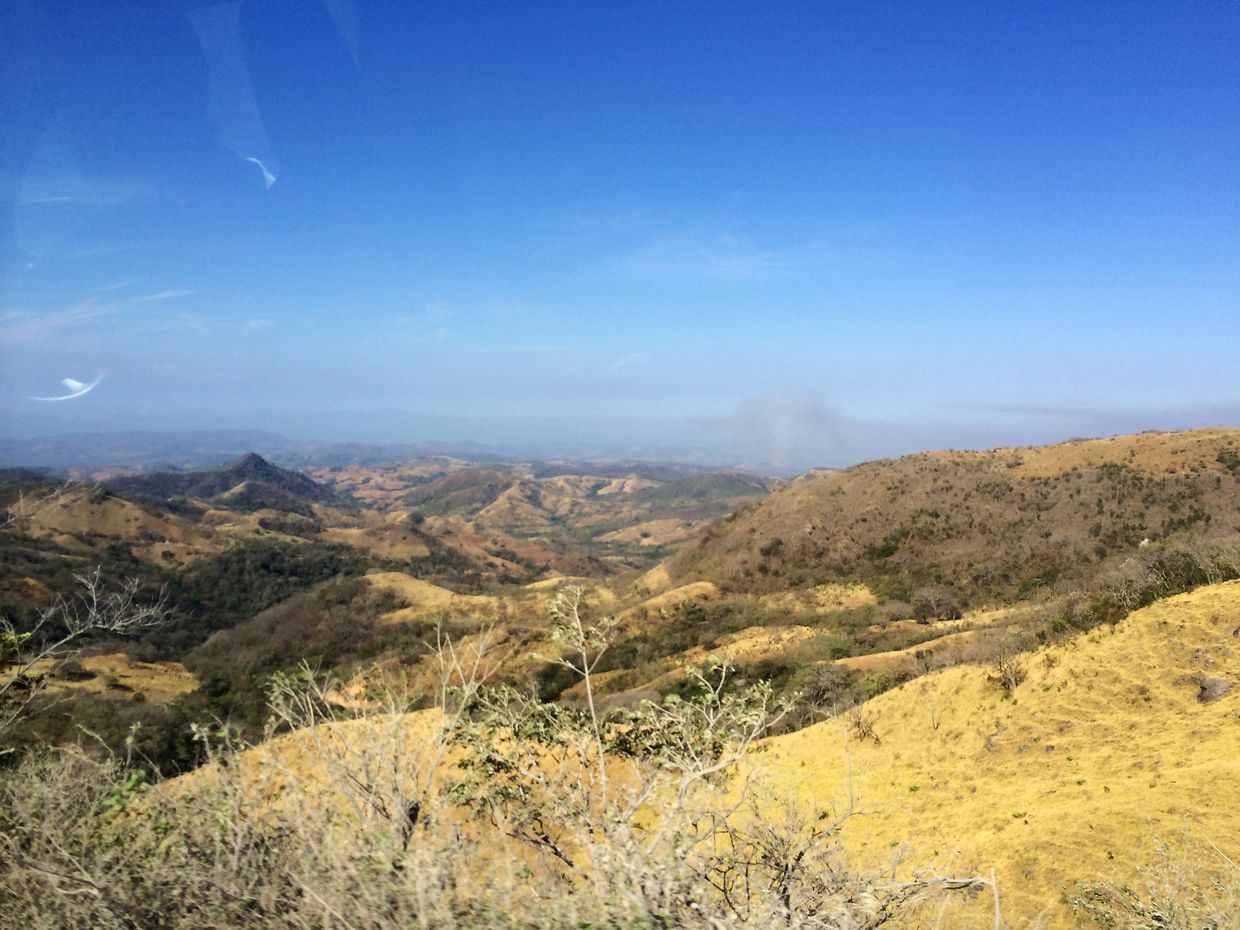
From Puntarenas the roads were paved and the “back massage” segment was over. Here the sea was industrialised, and great cargo ships were heading to port. Further south we passed pineapple farms, papaya farms and melon farms – the melons grow on the floor, to Sam’s surprise, “I thought they grew on trees”, “Imagine a watermelon tree” I quipped. The trees were lined with beautiful blossoming “golden shower” trees. We crossed a bridge (Puente Río Tarcoles) filled with tourists looking out over the edge; it’s a crocodile viewing point, on the river’s muddy bank below we glimpsed a massive 7ft crocodile. Just after the popular surf town Jaco, we stopped high on the hill to take a look at the stunning coastal views; “sometimes you can see the red macaws fly over”, and, as if on queue, a pair of scarlet red macaws flew over our heads, the only ones we saw in all of Costa Rica.
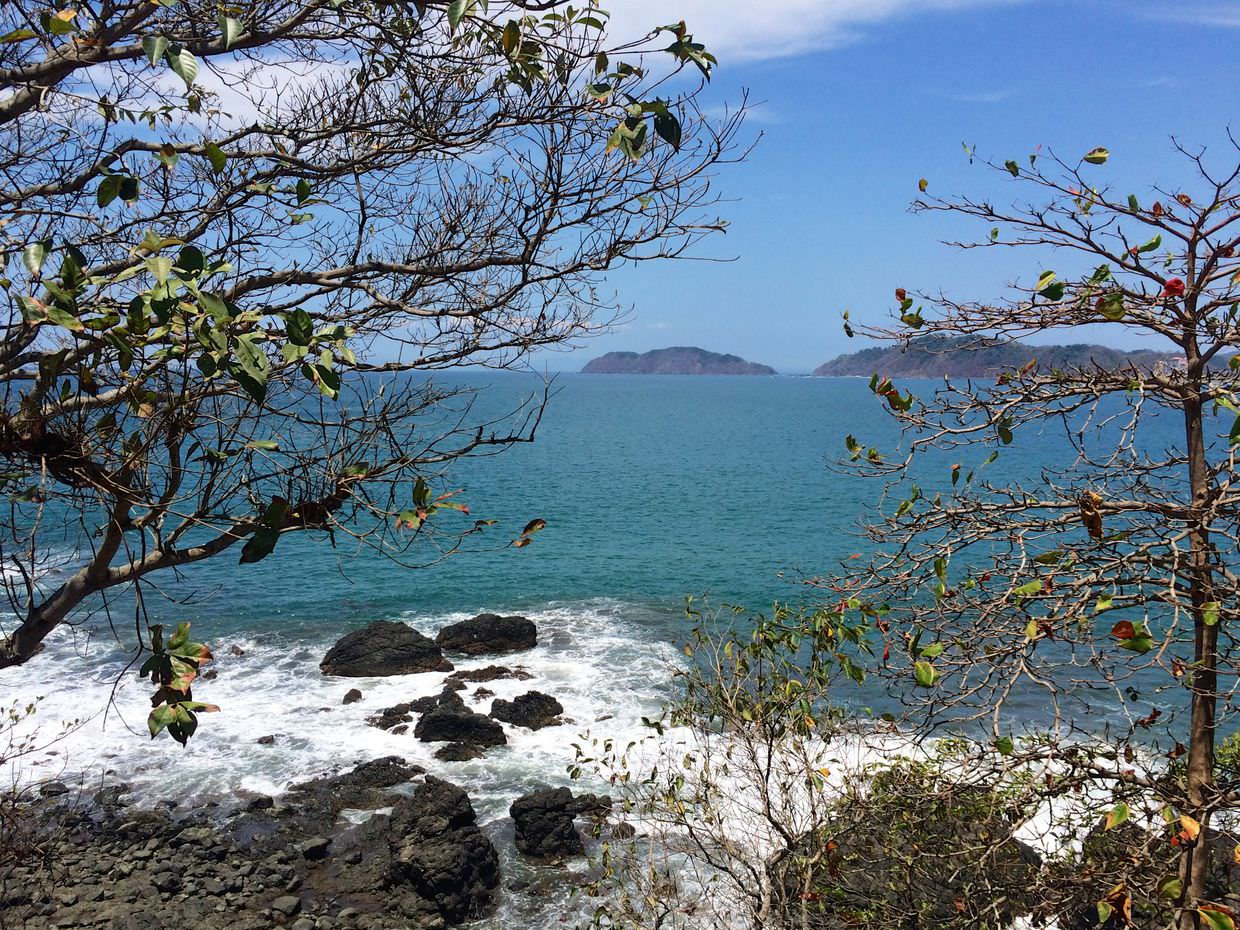
The final stretch to Manuel Antonio was lined with palm plantations, and we overtook many trucks carting the fruit to dirty, smelly processing plants. At Quepos Jose showed us the local market, the shops, and near to our hotel he pointed out the ATM, the bank, a good coffee place and some restaurants; he lives here, he knows what’s good. “Your hotel is in a good location”, he says.
On stepping out of the air conditioned minibus we found that Manuel Antonio was hot, hot and humid. It was the hottest of all the places we visited in Costa Rica, and the temperatures were regularly in the mid to high 30s.
Villas Nicolas
Villas Nicolas is a collection of separately owned timeshare villas, but as a group it’s treated as a hotel, with a pool (the water can be a little warm), bar and reception. Nestled high up on the hill amongst the trees the villas all look out West to the pacific ocean, each with their own shaded balcony and hammock. Around the grounds cats, agouti and lizards fight amongst each other.
Our “villa” was more than we’d expected; sofas, a kitchen with freezer and ice cubes, balcony, air conditioning; our own studio apartment for a few days. There’s plenty of nature to see from here too; Capuchin monkeys visit the hotel via the trees, one startled me as I found it staring while I was in the shower. The ever-present howler monkeys could be heard, and in the mornings we watched an elegant keel-billed toucan go about its business. Cherrie’s tanagers and hummingbirds were chirping all day.
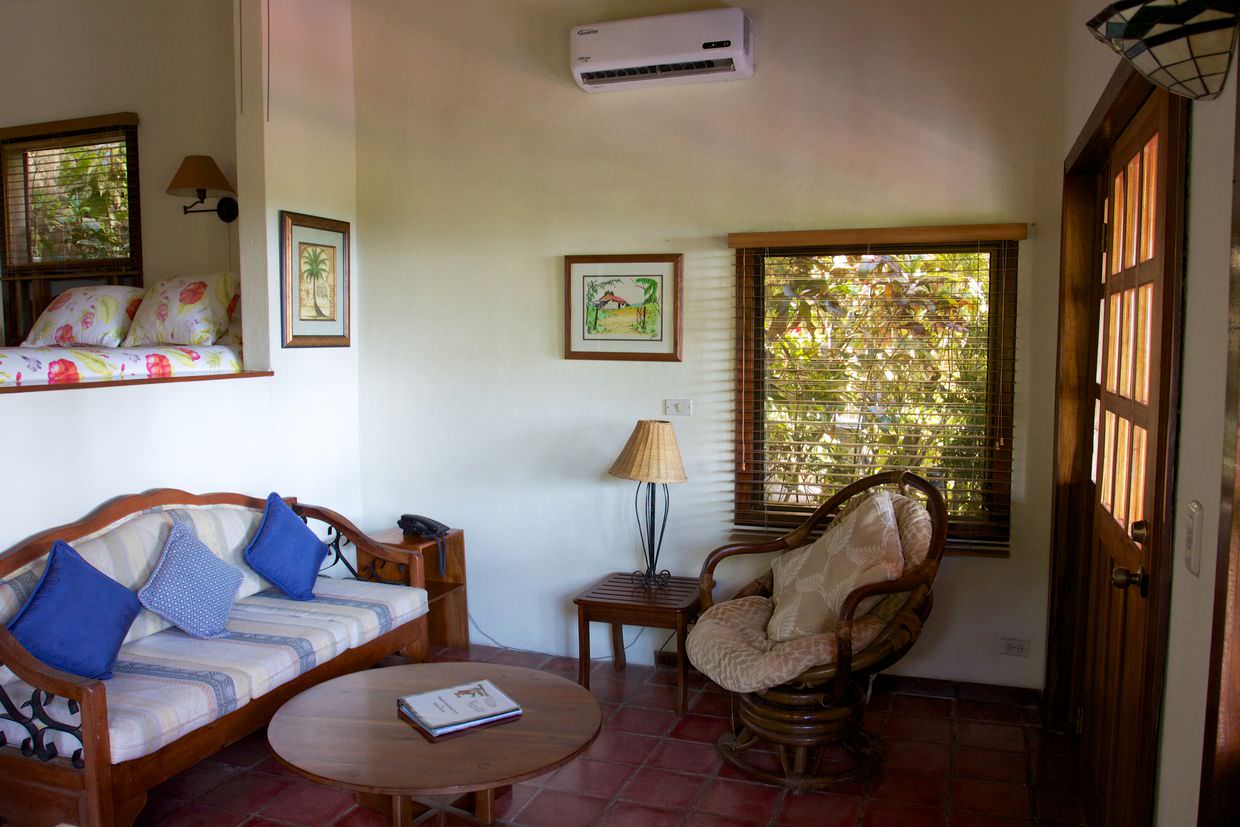
The staff were especially helpful in booking our various excursions, going to great lengths to help us with an early morning birdwatching tour after a late cancellation the night before.
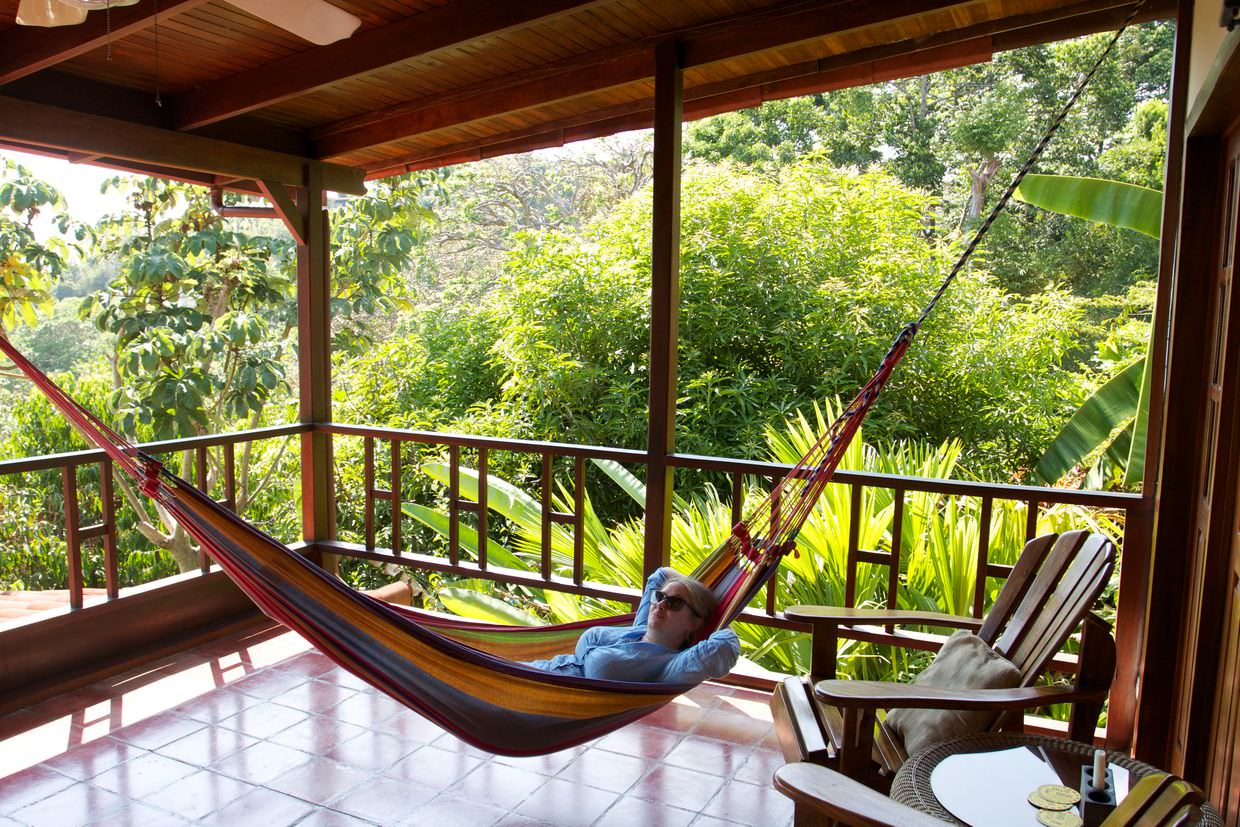
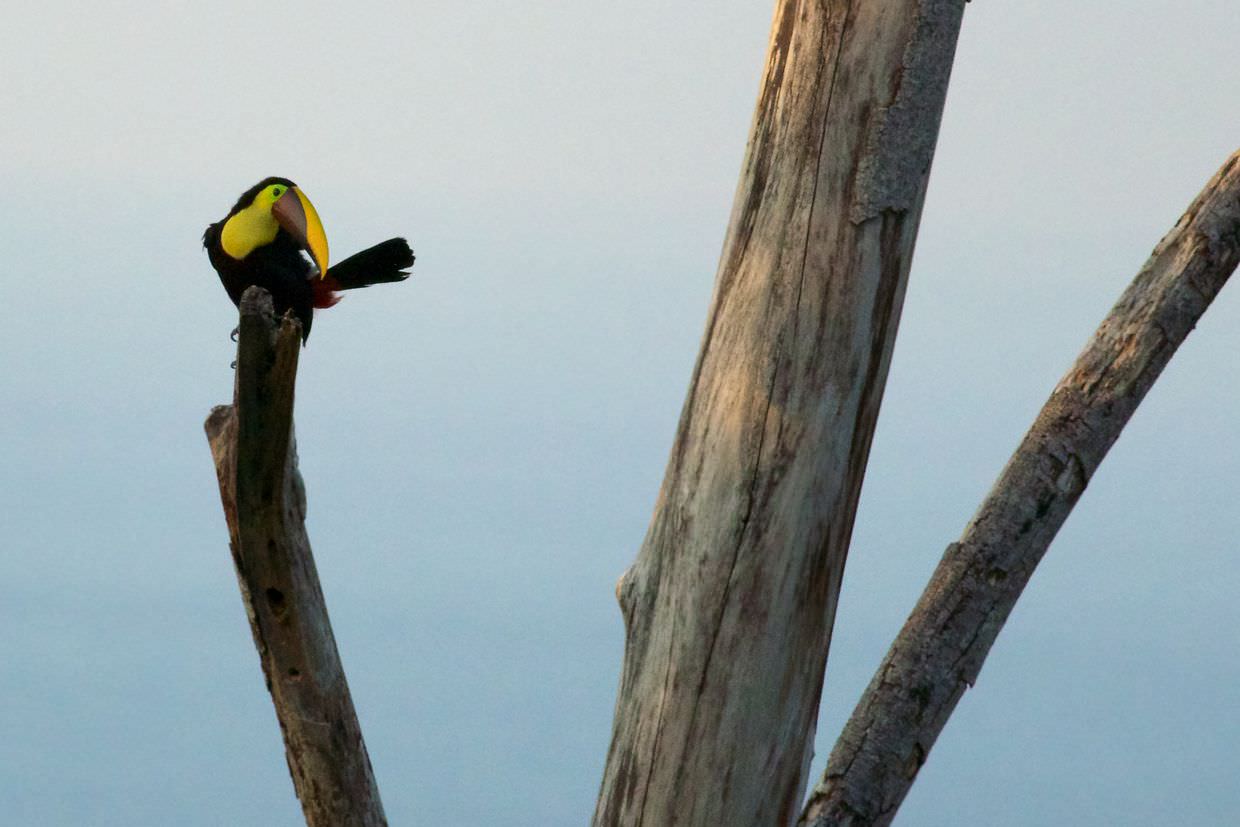
Falafel
We arrived a little too early to check-in, so went out to find some lunch. Just up the hill from Villas Nicolas is “Falafel bar”, where for a few dollars you can get the tastiest falafel wrapped in pita with humous and fried potato wedges and a smoothie on a side. We loved it here, and found ourselves returning a lot, to enjoy falafel on their laid back seats, looking out to sea. The perfect antidote to rice and beans.

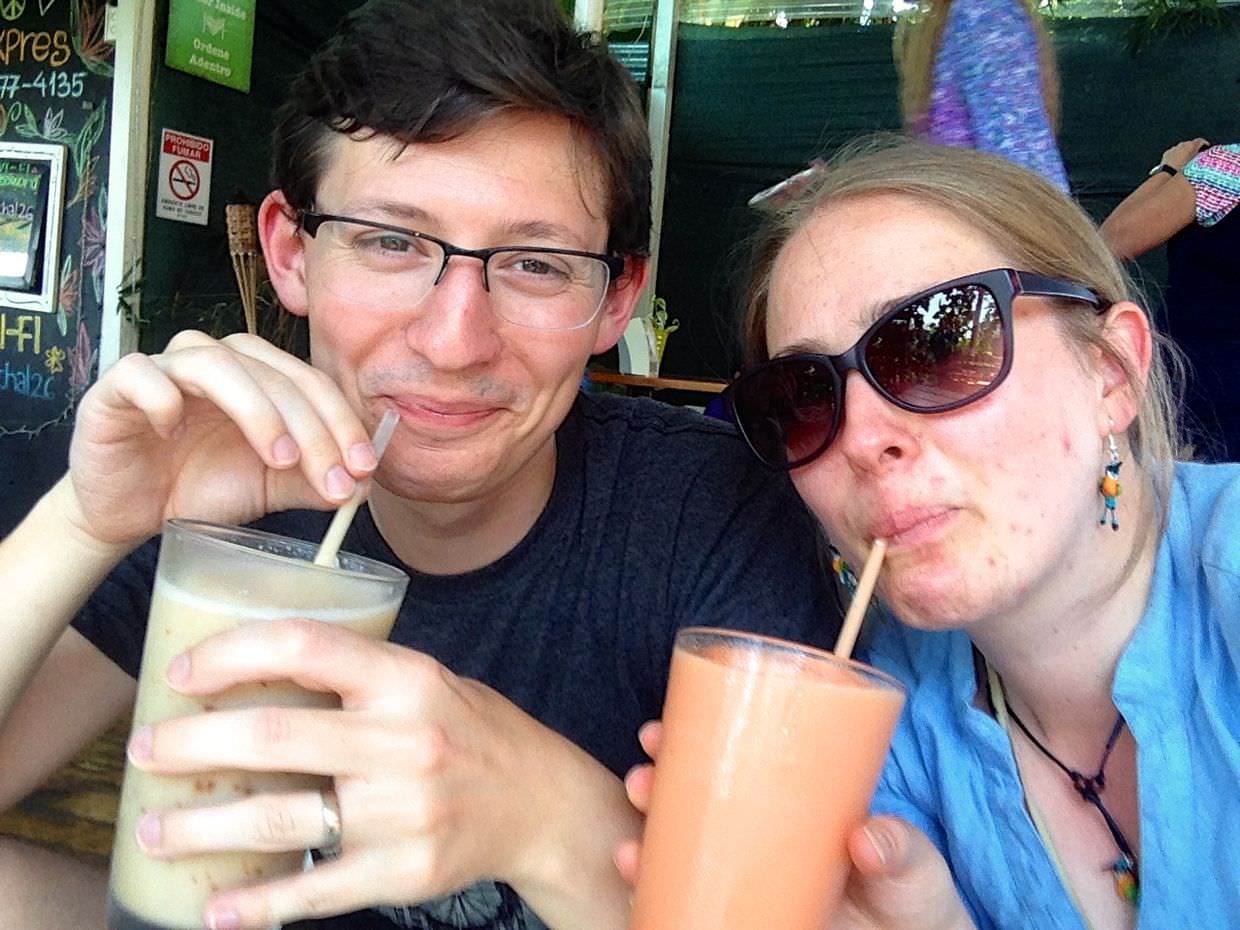
Kapi Kapi
Manuel Antonio national park is closed on Mondays, so a lot of the restaurants were too. The Lonely Planet recommended Kapi Kapi, its pan-asian seafood and indigenous dishes brought us here – importantly, it was open too.
It’s a plush looking place that feels like a high-end hotel lobby. We’re glad we arrived early, the place soon filled up with large family groups of tourists. (Tourists in Manuel Antonio were almost exclusively American, unlike elsewhere in Costa Rica, although this could be because this week now coincided with spring break). Our impulse purchase of a romantic bottle of Prosecco felt a little out of place. For most of the meal I stared down a large grasshopper that threatened to leap onto one of our plates, it never did of course.
Samantha chose prawns again, and these sugar cane skewered ones were delicious. My choice of mahi mahi was a little more disappointing, like fried cod with veg cooked in gravy.